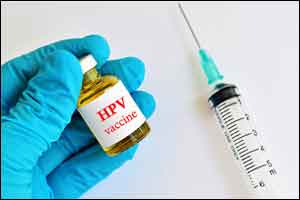- Home
- Editorial
- News
- Practice Guidelines
- Anesthesiology Guidelines
- Cancer Guidelines
- Cardiac Sciences Guidelines
- Critical Care Guidelines
- Dentistry Guidelines
- Dermatology Guidelines
- Diabetes and Endo Guidelines
- Diagnostics Guidelines
- ENT Guidelines
- Featured Practice Guidelines
- Gastroenterology Guidelines
- Geriatrics Guidelines
- Medicine Guidelines
- Nephrology Guidelines
- Neurosciences Guidelines
- Obs and Gynae Guidelines
- Ophthalmology Guidelines
- Orthopaedics Guidelines
- Paediatrics Guidelines
- Psychiatry Guidelines
- Pulmonology Guidelines
- Radiology Guidelines
- Surgery Guidelines
- Urology Guidelines
Cervical lesions Screening: HPV testing better than pap-smear

Human papillomavirus (HPV) testing detects a higher number of precancerous cervical lesions than cytology-based Pap smears in a female population including a proportion offered HPV vaccination, according to a new study published in PLOS Medicine by Karen Canfell of Cancer Council New South Wales, Australia, researchers at the Victorian Cytology Service, Melbourne, Australia, and colleagues.
Many countries are currently considering switching from classic Pap tests to primary HPV tests for cervical cancer screening, based on the strong evidence linking cervical abnormalities and infection with certain HPV types, and data suggesting that HPV tests detect more high-grade precancerous lesions. However, no study has yet compared the different methods in a population in which younger women had been offered prior HPV vaccination.
In the new Compass pilot study, researchers randomized cervical samples from 4,995 women aged 25-64 in Australia, in a 1:2:2 ratio, to be analyzed by either cytology (with HPV testing of low-grade abnormalities), HPV testing with partial genotyping of the virus for the highest risk types HPV16 and 18, and cytology (for participants with other high-risk HPV genotypes), or HPV testing with partial genotyping and dual-stained cytology. In the first screening round of the trial, the authors assessed the rates of women being referred for further testing and of detection of CIN2+ (high-grade cervical intraepithelial neoplasia) precancerous lesions.
For the cytology group, the overall referral and detected CIN2+ rates were 27/995 (2.7% [95%CI 1.8-3.9]) and 1/995 (0.1% [95%CI 0.0-0.6]), respectively; for the HPV testing and cytology group these were 75/1992 (3.8% [95%CI 3.0-4.7]) and 20/1992 (1.0% [95%CI 0.6-1.5]); and for the HPV and dual-stained cytology group these were 79/2008 (3.9% [95%CI 3.1-4.9]) and 24/2008 (1.2% [95%CI 0.8-1.6]). The researchers found that, in the first round of screening, detection of CIN2+ was significantly increased with HPV testing as compared with cytology, while referral was non-significantly increased. Adverse events were rare, and the one case of early-stage cervical cancer (in the HPV testing plus cytology group) was detected as appropriate by screening.
"These findings provide initial confirmation of an improved performance of primary HPV screening compared to cytology screening in settings with HPV-vaccinated populations," said Dr. Canfell. These findings support the planned imminent introduction of cervical screening by HPV testing in Australia which will occur at the end of 2017.

Disclaimer: This site is primarily intended for healthcare professionals. Any content/information on this website does not replace the advice of medical and/or health professionals and should not be construed as medical/diagnostic advice/endorsement or prescription. Use of this site is subject to our terms of use, privacy policy, advertisement policy. © 2020 Minerva Medical Treatment Pvt Ltd